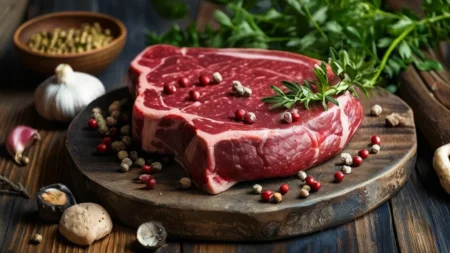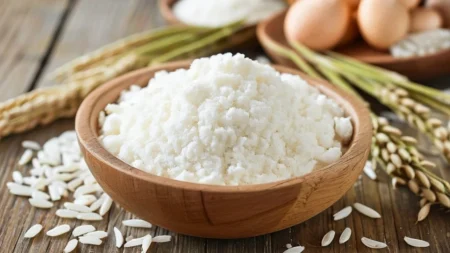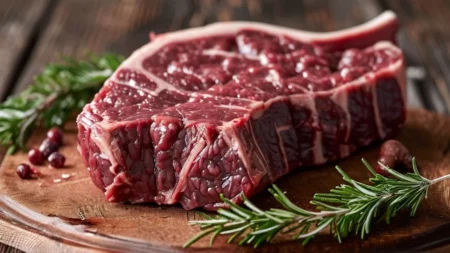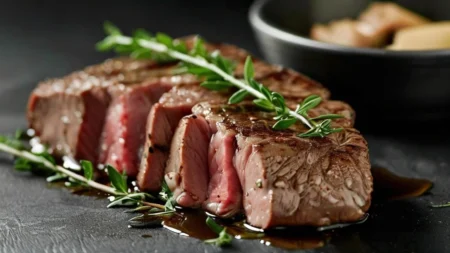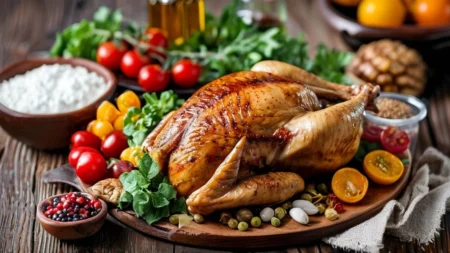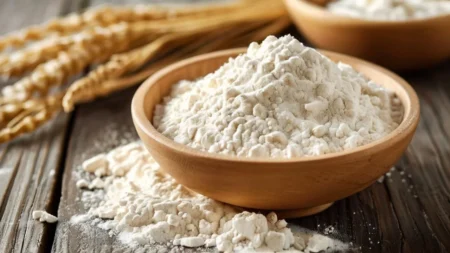Cornmeal: A Versatile Staple in Global Cuisines
Key Takeaways:
- Cornmeal is a finely ground product from dried corn kernels, used globally in a wide variety of dishes.
- It comes in different textures: fine, medium, and coarse, each suitable for different recipes.
- Cornmeal is gluten-free, making it a great alternative for those with gluten sensitivities or celiac disease.
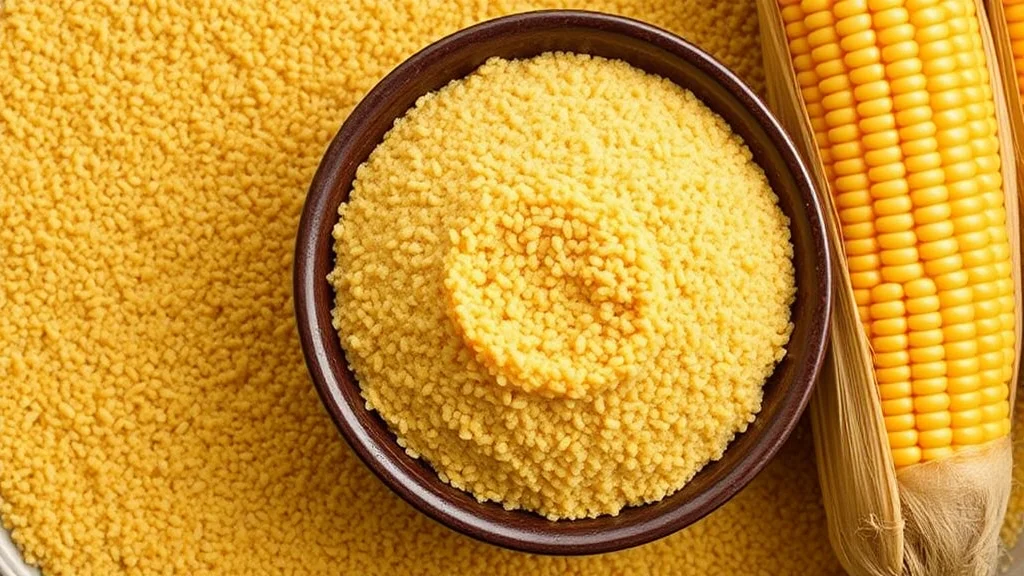
What is Cornmeal?
Cornmeal is made from ground dried corn and is a staple in many global cuisines. It is available in various textures ranging from fine to coarse and is commonly used in baking, frying, and as a base for porridges and polenta. This versatile ingredient is both nutritious and gluten-free, which makes it a popular choice for individuals following a gluten-free diet.
Types of Cornmeal
Cornmeal comes in different textures, each suited for specific types of dishes:
| Type of Cornmeal | Texture | Common Uses |
|---|---|---|
| Fine Cornmeal | Smooth texture | Baking (cornbread, muffins), pancakes |
| Medium Cornmeal | Slightly coarse | Polenta, grits, cornbread |
| Coarse Cornmeal | Very gritty | Cornbread, breading for frying |
Nutritional Profile of Cornmeal (Per 100g)
Cornmeal is rich in carbohydrates and offers a variety of essential nutrients. Here’s a breakdown of its nutrition:
| Nutrient | Amount |
|---|---|
| Calories | 370 kcal |
| Carbohydrates | 79.4 grams |
| Protein | 7.5 grams |
| Fat | 3.9 grams |
| Fiber | 7.3 grams |
| Iron | 4.1 mg (23% DV) |
| Magnesium | 127 mg (32% DV) |
Health Benefits of Cornmeal
Cornmeal is more than just a pantry staple—it’s packed with nutrients that offer significant health benefits. Here’s why you might want to include more cornmeal in your diet:
1. Gluten-Free Alternative
Cornmeal is naturally gluten-free, making it an excellent substitute for wheat flour in recipes. It’s suitable for those with celiac disease or gluten sensitivity and can be used in various dishes without compromising flavor or texture.
2. Rich in Dietary Fiber
Cornmeal contains a good amount of dietary fiber, helping to promote healthy digestion. Fiber aids in regulating bowel movements, prevents constipation, and supports overall gut health.
3. High in Essential Minerals
Cornmeal is rich in essential minerals like iron and magnesium. Iron is crucial for producing red blood cells and preventing anemia, while magnesium supports muscle function, bone health, and energy production.
Culinary Uses of Cornmeal
Cornmeal’s versatility makes it a popular ingredient across a variety of dishes worldwide. Whether you’re baking, frying, or creating creamy dishes, cornmeal offers endless possibilities.
1. Baking with Cornmeal
Cornmeal is commonly used in baking to make breads like cornbread, muffins, and even pancakes. Its slightly gritty texture adds a unique crunch to baked goods while providing a sweet, nutty flavor.
Popular Recipes:
- Classic Southern cornbread
- Cornmeal pancakes
- Corn muffins
2. Polenta
Polenta, an Italian dish made from medium or coarse cornmeal, is a creamy, porridge-like dish. It can be served soft and warm or allowed to cool and harden, then sliced and fried or grilled. Polenta is often flavored with butter, cheese, or herbs for a rich and satisfying side dish.
3. Frying with Cornmeal
Coarse cornmeal is perfect for breading and frying foods, adding a crispy texture and rich flavor. It is commonly used to coat fish, chicken, or vegetables before frying.
Popular Recipes:
- Cornmeal-crusted fried chicken
- Southern fried catfish
- Cornmeal-coated okra
Cornmeal Around the World
Cornmeal is not just popular in American cuisine but is also a staple ingredient in dishes from various cultures. Here’s how cornmeal is used in different parts of the world:
1. Southern United States
In the Southern U.S., cornmeal is used to make classic dishes like cornbread, hush puppies, and grits. These comfort foods are beloved for their hearty flavors and textures.
2. Italy
Polenta is the Italian name for a dish made from cornmeal. It is a traditional comfort food often served with rich meat stews or sautéed vegetables.
3. Africa
In many African countries, cornmeal is used to make pap or ugali, a stiff porridge served alongside meat or vegetable stews. It is a staple in African diets, providing essential carbohydrates and nutrients.
Health Considerations and Gluten-Free Baking
For those with gluten sensitivities, cornmeal serves as a safe and nutritious alternative to wheat-based flours. Here are some tips for using cornmeal in gluten-free baking and cooking:
1. Combining with Other Flours
While cornmeal can be used on its own in recipes like cornbread or polenta, combining it with other gluten-free flours such as almond flour or rice flour can provide a better texture and structure for baked goods like cakes or breads.
2. Adjusting Cooking Times
Because cornmeal lacks gluten, which helps with elasticity and rising in doughs, recipes using cornmeal may require longer baking times or additional ingredients such as eggs or baking powder to help with structure.
3. Ensuring Proper Nutrition
Cornmeal is naturally low in some nutrients like protein and fats. To ensure a well-rounded meal, consider pairing cornmeal-based dishes with nutrient-dense foods like vegetables, proteins, or healthy fats.
Popular Cornmeal-Based Dishes
Cornmeal plays a central role in many traditional dishes around the world. Here are some popular recipes that highlight its versatility:
1. Cornbread
A classic American dish, cornbread is a staple in Southern cuisine. This slightly sweet bread is perfect alongside hearty stews, soups, or chili.
2. Tamales
In Mexican cuisine, cornmeal (or masa harina) is used to make tamales. These delicious packets of corn dough are stuffed with meats, cheeses, or vegetables and steamed in corn husks.
3. Grits
Grits, a dish made from coarsely ground cornmeal, are a Southern favorite. Often served with butter, cheese, or shrimp, grits are a comforting and filling dish enjoyed at any time of the day.
Conclusion
Cornmeal is an incredibly versatile and nutritious ingredient that plays an essential role in a variety of global cuisines. Whether it’s baked into bread, used as a crispy coating for fried foods, or cooked into a creamy polenta, cornmeal brings flavor, texture, and nutrition to any dish. Its gluten-free nature makes it an excellent choice for those avoiding gluten, and its high fiber and essential minerals support overall health. Experiment with different textures of cornmeal to discover new ways to enjoy this pantry staple.
FAQ
Q: What’s the difference between cornmeal and corn flour?
A: Cornmeal has a coarser texture than corn flour, which is finely ground. Corn flour is best used in baking as a thickening agent, while cornmeal is often used for breading, frying, or making dishes like cornbread or polenta.
Q: Is cornmeal gluten-free?
A: Yes, cornmeal is naturally gluten-free, making it a great alternative to wheat-based products for those with gluten sensitivities or celiac disease.
Q: Can I substitute cornmeal for flour in recipes?
A: Cornmeal can sometimes be used as a substitute for flour in baking, but it may alter the texture and flavor of the final product. It’s best to use recipes that specifically call for cornmeal.
Q: How should I store cornmeal?
A: Cornmeal should be stored in an airtight container in a cool, dry place. To extend its shelf life, you can store it in the refrigerator or freezer.
Q: What’s the best type of cornmeal for polenta?
A: Medium or coarse-ground cornmeal is ideal for making polenta, as it provides a creamy yet slightly textured consistency.





